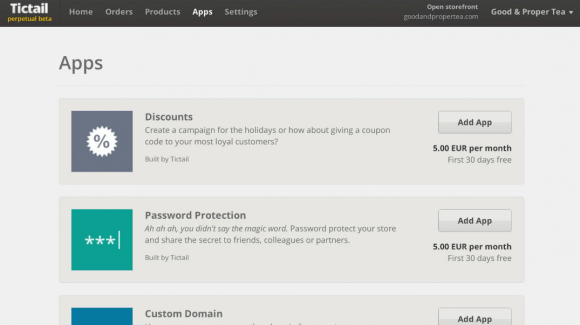
Stockholm’s sweetheart startup, Tictail grew quickly by copying a basic tenant of Tumblr. Like setting up a nice looking blog, e-commerce should be simple, easy, and beautiful for first-time store owners to set up and start selling right away. But now Tictail has embraced more of an iOS for e-commerce philosophy as they have fully launched their API, developer platform, and App Store, which allows developers to start building apps and monetizing them through the platform.
“One of the things that was really important to us when when we decided to do this was that we wanted to avoid a situation where its just an API where two services communicate with each other,” says Carl Waldekranz, the CEO of Tictail, saying that they wanted to avoid the two different logins, and the same options on two different services. To keep the user experience consistent, they wanted to do more than unite the API, but also provide developers with a UI kit, a redesigned version of Bootstrap 3, that looks and feels like Tictail.
Tictail built a few apps themselves, such as password protection for products, or simple discounts. These apps are suggested in the Merchants’ feed, which works as their backend to alert of when to ship out products. They’re super simple features, but they’ve popped into the merchant’s to-do list feed 137,000 times since the features launched around March, and 71% of these actions were preformed.
That’s a huge conversion, and Tictail is allowing developers to also plug into these same to-do list features to motivate merchants and advertise new apps.
Waldekranz gives the example of if a merchant has three abandoned carts worth €150, a third party app could advertise to purchase an abandoned cart retargeting app for €10 a month. At present, that’s the only monetization feature developers will have- a fixed monthly rate. But in the future they will also likely allow developers to monetize percentage of sales through their apps. The goal for Tictail is to offer a seamless service, and do more with their platform then they could do just by themselves.
At launch they have nine new apps released in the platform, including Sellfy from Riga, a name a few ArcticStartup readers may recognize.
Currently Tictail has 23,000 stores, more than double the 10,000 they celebrated in March. Last month, 3,500 new stores were added to Tictail, suggesting it could be a fruitful platform for developers.




